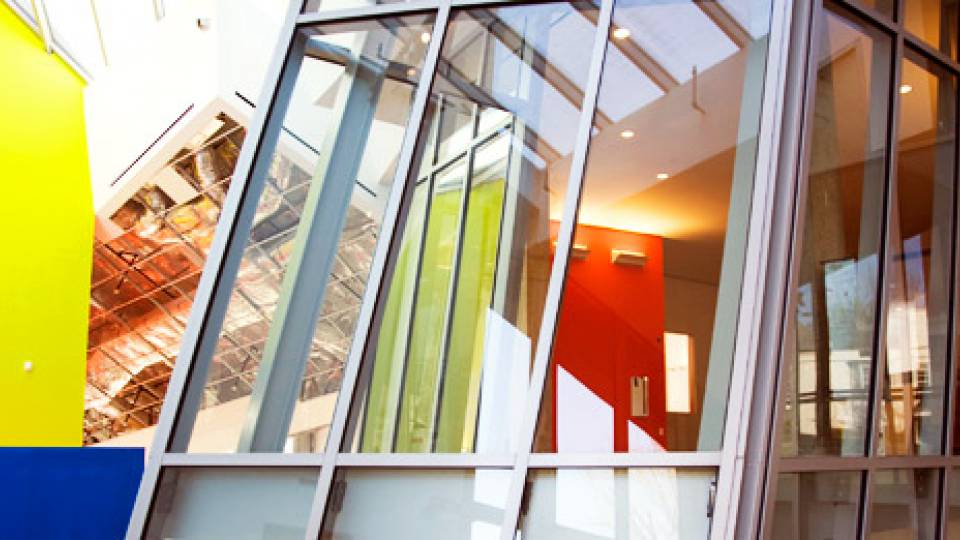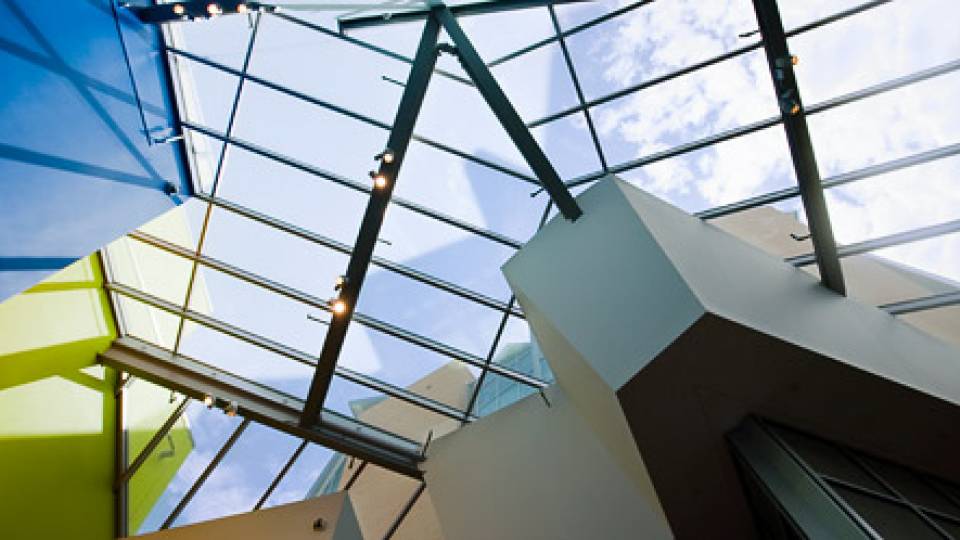Peter B. Lewis, a member of the Princeton Class of 1955 and a trustee of the University, is making a gift of $60 million to support the construction and the programs of a new science library at Princeton that will be designed by the internationally acclaimed architect Frank Gehry. The library is expected to be located near the corner of Ivy Lane and Washington Road, with a connection to the existing math-physics library in Fine Hall.
The announcement of the gift and the selection of Gehry were made by the trustees at their meeting this past weekend.
"This is a very significant project for Princeton in two respects," said President Shirley M. Tilghman. "It allows us to create library space for the sciences that is designed to meet the needs of the 21st century, and it allows us to bring to our campus the work of one of the most original and distinctive architects of our time. We are deeply grateful to Peter Lewis for making it possible for us to achieve both of these goals, just as he made it possible through his earlier gift for us to make major advances in the field of genomics."
In 2000, Lewis presented the University with a gift of $55 million, part of which established the Lewis-Sigler Institute for Integrative Genomics . The building to house the institute is currently under construction across Washington Road and just south of the proposed science library site.
Lewis is chairman of the board of the Progressive Corp., one of the nation's largest auto insurers, and is also a long-time patron of the arts. He helped establish the Cleveland Center for Contemporary Art and chairs the board of trustees of the Guggenheim Foundation in New York. In this latter capacity he worked with Gehry, who designed the Guggenheim museum in Bilbao, Spain, a masterwork that opened in 1997 to worldwide acclaim.
Gehry, whose work often features bold, curved shapes that seem to defy the physical limitations of ordinary building materials, founded his architectural firm in 1962. In 1989, he received the Pritzker Prize, the highest award in architecture, and in 1999 he received the American Institute of Architects Gold Medal. His current work includes several academic buildings, including the Peter B. Lewis building for the Weatherhead School of Management at Case Western Reserve University. Construction is also under way for the Stata Center, a building designed by Gehry at the Massachusetts Institute of Technology. In addition, he recently has been commissioned to design a new wing for the Corcoran Museum in Washington, D.C.
The new science library is expected to serve researchers working on projects that cross scientific fields, provide services and facilities that take into account the revolutionary changes in scholarly publishing over recent years, and meet the needs of students far better than the current patchwork of small, discipline-specific libraries where seating tends to be tight and tucked away in corners.
According to University Librarian Karin Trainer, "Our experience with the renovated Firestone Trustee Reading Room shows that undergraduates are drawn to study in places with ample, contiguous seating and where it is easy to use a computer and to connect to the campus network. Our experience at the Stokes Library shows that we need to have classrooms where librarians can teach students how to find the latest information in their fields of study. From the new library at the Friend Center we know that undergraduates need rooms where they can gather to work in small groups. We expect to have all of these things in the new building, as well as a center from which we will run an electronic delivery service for faculty. We will also move our increasingly popular Digital Map and Geospatial Information Center from its current location in Guyot Hall to the new building."
Trainer added, "For an illustration of the extent to which science is crossing traditional boundaries, one needs only to look at the new course in microbial biogeochemistry and microbial ecology approved at last week's faculty meeting. Our goal in the new library will be to support teaching and research in continually evolving and newly emerging fields through traditional, new and still emerging technologies. This project presents us with a number of interesting programmatic as well as architectural challenges, and I join with others in thanking Peter Lewis for this splendid opportunity to address them."
Contact: Marilyn Marks (609) 258-3601

